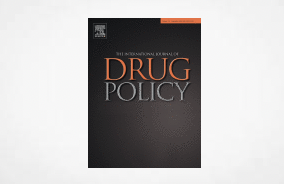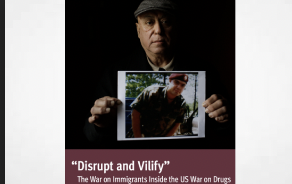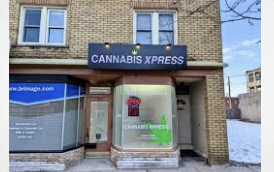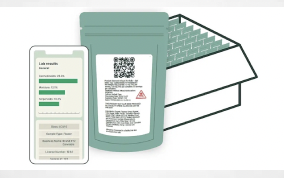Well spotted by Lex Pelger
You can read all his other amazing discoveries here. https://www.cannabinoidsandthepeople.whitewhalecreations.com/
Highlights
- First study on distribution of cannabis policies using an intersectional approach.
- Black residents in privileged areas were most likely to live where retail was allowed.
- Equity provisions were rare but most common for Black residents in privileged areas.
- Strict ad policies were most common for Latinx and Black residents in poorer areas.
- The impact of cannabis policy disparities on public health remains uncertain.
Abstract
Background
Policies governing legal cannabis commerce can vary widely within a U.S. state when local control exists. Disproportionate distribution of policies allowing retail sale, protecting public health, or promoting equity in licensing may contribute to differences in health and economic outcomes between sociodemographic subgroups. This cross-sectional study jointly examined racial, ethnic, and neighborhood socioeconomic characteristics of Californians subject to specific local cannabis policies to identify such disparities.
Methods
Local laws in effect January 1, 2020, governing retail cannabis sales (bans, expanding buffers from youth-serving sites, restricting advertising, promoting equity in licensing, and capping outlets) were determined for California’s 539 jurisdictions. The number of Asian, Black, Latinx, and white residents in socioeconomic advantaged versus disadvantaged neighborhoods (Census block groups) was determined using 2015–2019 American Community Survey data. We estimated proportions of the sociodemographic subpopulations covered by specific policies based on the block group’s jurisdiction. To ascertain disparities in coverage proportions were compared across subgroups using Z-tests with the Bonferroni correction.
Results
Residents of socioeconomically advantaged neighborhoods were more likely to live in jurisdictions allowing retail cannabis commerce than those in disadvantaged neighborhoods (61.7 % versus 54.8 %). Black residents in advantaged neighborhoods were most likely to live where retailing was allowed (69 %), and white residents in disadvantaged neighborhoods least likely (49 %). Latinx and Black populations from disadvantaged neighborhoods were most likely to live in jurisdictions with stronger advertising restrictions (66 %). Equity in licensing policy was more prevalent for Black residents living in advantaged neighborhoods (57 %) than disadvantaged neighborhoods (49 %).
Conclusions
Local cannabis policies potentially protecting public health and social equity are unequally distributed across race, ethnicity, and socioeconomic characteristics in California. Research examining whether differential policy exposure reduces, creates, or perpetuates cannabis-related health and socioeconomic disparities is needed.
Introduction
California’s 2016 ballot Proposition 64 (California Proposition 64, Marijuana Legalization (2016), n.d.) legalized growing or possessing cannabis for recreational use by persons aged 21 and older. It established a framework for legal cannabis commerce, which commenced in January 2018. The state created a regulatory system for licensing and criteria for operations, but cities and counties retained local control (California Proposition 64, Marijuana Legalization (2016), n.d.). While some municipalities prohibit all commercial cannabis activities, many jurisdictions developed their own cannabis regulations, creating a patchwork of local policies with unclear distributional equity (Padon et al., 2022). Many provisions considered to be best practices in tobacco control remain largely absent from the regulatory landscape (Padon et al., 2022). Mitigating harms inflicted by the discriminatory practices of the War on Drugs, which disproportionately affect Black (Alexander, 2012; American Civil Liberties Union, 2020) and Latinx communities (Motivans, 2020; Taxy et al., 2015), has been a widely cited rationale for cannabis legalization (Earp et al., 2021; Miron & Partin, 2021). While major progress has been made on reducing cannabis-related arrests and expunging criminal convictions, as of 2020, only 5 % of California’s 539 cities and counties had adopted licensing policies to advance social justice for affected communities by supporting their entry into the legal cannabis industry (Padon et al., 2022). Simultaneously, concern exists that concentrating cannabis retailers in economically disadvantaged or racially or ethnically marginalized communities could have harmful consequences, as has occurred with alcohol and tobacco retailers (Kong et al., 2019; Ribisl et al., 2017; Romley et al., 2007).
Differential distribution of local cannabis policies across demographic groups could mitigate, create or exacerbate social injustice and health disparities. Cannabis use, especially when frequent, has been associated with negative health outcomes (National Academies of Sciences, Engineering & Medicine, 2017), and among Californians, any and frequent use rates have typically been highest among non-Latinx Black and white populations (Padwa et al., 2022). Low-income communities, already more vulnerable to health disparities (Phelan et al., 2010), may be at greater risk if their local laws have fewer public health protections. It remains unclear which cannabis policies will be associated with positive versus negative long-term health and social outcomes.
Diverse social identities are experienced simultaneously, necessitating an intersectional examination of differential policy exposure (Crenshaw, 1989; Krieger et al., 1993). This study jointly examines the proportion of California residents from different racial, ethnic, and socioeconomic subgroups living under laws allowing cannabis retail commerce, protecting public health, and facilitating licensing equity to identify possible disparities in this natural experiment of local cannabis law exposure.
Section snippets
Methods
This cross-sectional study examined exposure by sociodemographics to local cannabis policies in place in California as of January 1, 2020. The Public Health Institute Institutional Review Board determined it was not human subjects research.
Demographics
Table 1 presents demographic characteristics across the analytic sample, representing approximately 98.4 % (margin of error=±0.2) of California’s population. The majority of white (59.0 %) and Asian (69.8 %) residents lived in advantaged neighborhoods, whereas the majority of Black (63.3 %) and Latinx (69.2 %) residents lived in disadvantaged neighborhoods. All differences within racial and ethnic categories were statistically significant (p < 0.001).
Policy coverage
Fig. 1, Fig. 2 present the percentages and
Discussion
California’s local cannabis policy landscape varied greatly throughout the state and across socioeconomic, racial, and ethnic groups. When jointly considering these demographic characteristics, a more nuanced distribution of policy coverage was revealed.
Strengths
Our findings fill important gaps in the literature by identifying subtle but meaningful differences in Californians’ exposure to local cannabis policies across intersecting racial and ethnic identities and neighborhood advantage. These policies may systematically affect health and economic disparities. We examined the universe of California’s 539 jurisdictions and included both storefront and delivery retail policy. Previous research was primarily limited to examining storefronts serving
Limitations
While use of the Area Deprivation Index, a well-established, validated area-level measure of neighborhood socioeconomic advantage (Singh, 2003; Singh et al., 2013), captured a more comprehensive view of socioeconomic context than single socioeconomic measures, the index may misrepresent neighborhood conditions if extreme disparities exist between residents within the same block group, which may bias results in varied directions (Hannan et al., 2023). Our intersectional analysis of racial and
Conclusion
Two years after California’s adult-use market opened, individuals from more socioeconomically advantaged neighborhoods were most likely to live where cannabis retail was allowed. Potentially protective policies were neither widespread nor equally distributed across neighborhood advantage levels or race and ethnicity. Equity considerations in licensing and hiring were even less widespread, and more prevalent for Black residents from more advantaged neighborhoods. How these disparities in
Funding
This project was supported by funds provided by The Regents of the University of California, Tobacco-Related Diseases Research Program, Grant Number 28IP-0035C, and by the National Institute on Drug Abuse, Grant Number R01DA047405.
Ethics approval
The authors declare that the work reported herein did not require ethics approval because it did not involve animal or human participation.
CRediT authorship contribution statement
Bethany J Simard: Conceptualization, Methodology, Software, Formal analysis, Data curation, Writing – original draft, Writing – review & editing, Visualization. Alisa A Padon: Writing – review & editing, Writing – original draft, Supervision, Project administration, Methodology, Investigation, Funding acquisition, Conceptualization. Lynn D Silver: Writing – review & editing, Supervision, Project administration, Methodology, Funding acquisition, Conceptualization. Lyndsay A Avalos: Writing –
Declaration of competing interest
The authors declare that they have no known competing financial interests or personal relationships that could have appeared to influence the work reported in this paper.
References (65)
Incorporating intersectionality theory into population health research methodology: Challenges and the potential to advance health equity
Social Science & Medicine
(2014)- et al.
Black women health inequity: The origin of perinatal health disparity
Journal of the National Medical Association
(2021) - et al.
Racism, sexism, and social class: Implications for studies of health, disease, and well-being
American Journal of Preventive Medicine
(1993) - et al.
Conceptualization and measurement of environmental exposure in epidemiology: Accounting for activity space related to daily mobility
Health & Place
(2013)
The new Jim Crow
(2012)- American Civil Liberties Union. (2020). A Tale of two countries: Racially targeted arrests in the era of marijuana…
- et al.
Neonatal outcomes associated with in utero cannabis exposure: A population-based retrospective cohort study
American Journal of Obstetrics and Gynecology
(2024) - et al.
Prenatal cannabis exposure and the risk for neuropsychiatric anomalies in the offspring: A systematic review and meta-analysis
American Journal of Obstetrics and Gynecology
(2024) - Bonta, R. (2023). AB 1706 legislative report. California Department of Justice, California Justice Information Services…
- California | Municode Library. (n.d.). Retrieved September 30, 2020, from…
Access Full paper at
https://www.sciencedirect.com/science/article/abs/pii/S0955395924002263



















